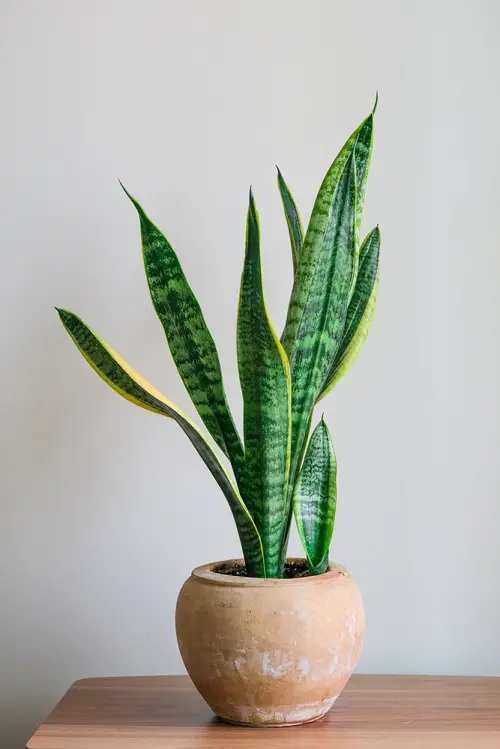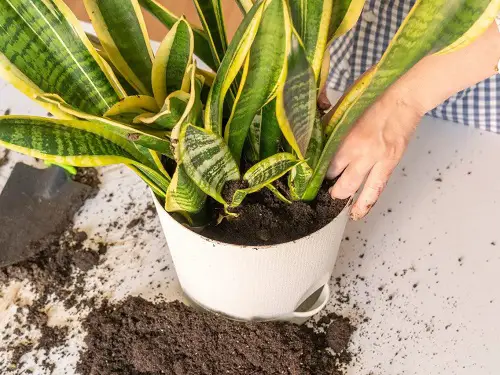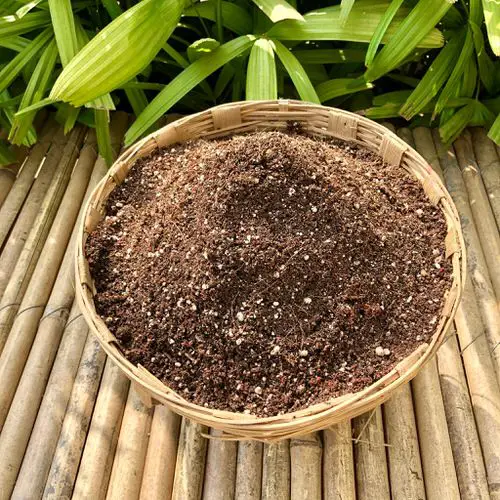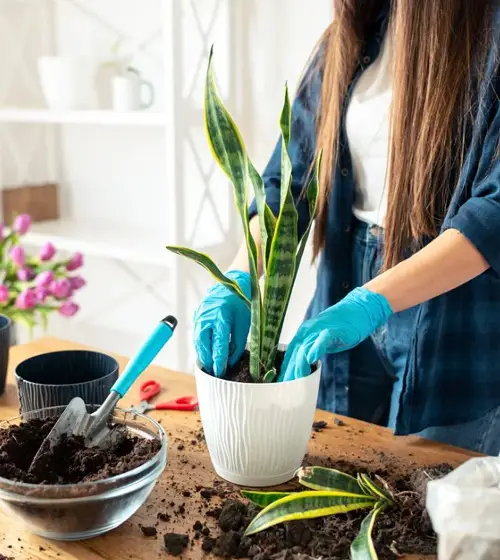Looking for the best Snake Plant Soil Recipes? Follow our expert tips and techniques to craft the growing medium using organic approach!

Making the ideal growing medium is crucial for a healthy growth of any plant. In this guide, discover expert tips and Snake Plant Soil Recipes to ensure your plant thrives.
Read about Healthy vs. Unhealthy Snake Plant (Big Differences) here
Impact of Soil on Snake Plant Health

The soil mix plays a crucial role in the health and growth of plants. Here are some key impacts of soil mix on plant health and growth:
- Nutrient availability: The soil mix provides essential nutrients for plant growth. A well-balanced soil mix that contains organic matter and a variety of nutrients supports healthy plant development. Nutrients such as nitrogen (N), phosphorus (P), and potassium (K) are necessary for various plant functions, including leaf growth, root development, and flowering. A deficient or imbalanced soil mix can lead to nutrient deficiencies or toxicities, resulting in stunted growth, yellowing leaves, or poor flowering.
- Drainage and aeration: The soil mix composition affects drainage and aeration, which are critical for root health. Good drainage ensures excess water doesn’t accumulate around the roots, preventing waterlogging and root rot. Proper aeration allows oxygen to reach the roots, facilitating nutrient uptake and overall plant growth. A well-draining soil mix with components like sand, perlite, or vermiculite promotes adequate drainage and prevents overly compacted soil.
- Water retention: The soil mix’s ability to retain moisture is important for plant hydration. Some plants prefer slightly moist soil, while others thrive in drier conditions. The soil mix should retain enough moisture to sustain the plant between waterings but not hold excessive moisture, which can lead to root rot. Adding organic matter, such as compost or peat moss, to the soil mix helps improve water retention while maintaining proper drainage.
- pH level: The soil mix’s pH level influences nutrient availability to plants. Different plants have varying pH preferences. Some prefer acidic soil, while others thrive in alkaline or neutral soil. Maintaining the appropriate pH range in the soil mix ensures optimal nutrient absorption by plant roots. Adjusting the pH of the soil mix through amendments, such as lime or sulfur, can be necessary to meet the specific needs of particular plant species.
- Disease and pest resistance: The soil mix can impact a plant’s resistance to diseases and pests. Healthy soil with good structure and nutrient balance supports robust plant growth, making plants less susceptible to diseases and pests. Additionally, some soil mixes enriched with beneficial microorganisms or organic matter can promote beneficial microbial activity and natural pest control mechanisms.
- Root development: The soil mix provides a suitable environment for root growth and establishment. Loose, well-aerated soil allows roots to penetrate easily, promoting healthy root development. A dense or compacted soil mix can inhibit root growth and restrict nutrient uptake.
It’s important to consider the specific requirements of the plant species you are growing and tailor the soil mix accordingly. Different plants have different preferences for soil composition, moisture levels, and pH ranges. Understanding these requirements and providing an appropriate soil mix can significantly contribute to the overall health and growth of plants.
Find 22 Different Ways to Grow Snake Plants
Best Snake Plant Soil Recipes

Making Snake Plant Soil Recipes is a simple process.
#1 Recipe
For making an easy Snake Plant Soil Recipe, blend 3/4 organic potting soil, 1/4 part succulent soil mix, and an equal amount of compost. Be mindful not to add excessive amounts of compost, as it can increase the soil’s water retention, which may adversely affect your snake plant’s health.
#2 Recipe
Mix two parts regular potting soil, one-part coarse sand, one part perlite or pumice, one part coco coir or peat moss well. Fill the pot with the soil mix and plant your sansevieria to ensure its proper care and healthy growth.
#3 Recipe
Basic Snake Plant Soil Recipe: Mix equal parts of potting soil, sand, and perlite. This mixture will provide good drainage and aeration for your snake plant.
#4 Recipe
Peat-based Snake Plant Soil Recipe: Mix 2 parts peat moss, 1 part perlite, and 1 part vermiculite. This mixture is great for retaining moisture and provides good drainage.
#5 Recipe
Succulent Snake Plant Soil Recipe: Mix 2 parts potting soil, 1 part sand, and 1 part perlite. This soil mix will provide excellent drainage and aeration for your snake plant.
#6 Recipe
Coir-based Snake Plant Soil Recipe: Mix 2 parts coconut coir, 1 part perlite, and 1 part vermiculite. This mixture is great for retaining moisture and provides good drainage.
#7 Recipe
Mix equal parts of garden soil, sand, and peat moss. You can also add some perlite or vermiculite to the mixture for better drainage and aeration.
The Bottom Line
When making a Snake Plant Soil Recipe, it’s important to consider their specific needs.
- Snake plants prefer a well-draining soil mix to prevent waterlogged roots, which can lead to rot.
- Incorporating organic matter into the potting mix can provide some moisture retention while maintaining good drainage.
- Avoid using heavy garden soil or clay-based mixes that may retain too much water.
- Aim for a pH range between 6.0 and 7.0. Adjust the pH if necessary using additives like agricultural lime or elemental sulfur.
- Use a balanced, diluted fertilizer specifically formulated for houseplants and apply sparingly, following the manufacturer’s instructions.
- It’s recommended to sterilize the potting mix components before use to eliminate potential pests, diseases, or weed seeds. You can do this by baking the mixture in an oven at a low temperature (around 180°F/82°C) for approximately 30 minutes.
Remember to repot snake plants into slightly larger containers only when necessary, as they prefer being slightly root-bound. Regularly monitor soil moisture and water only when the top inch or so of the soil feels dry.


